Science
Reusing Recyclables: 10 Science Tools to Make for StudentsMay 22, 2024

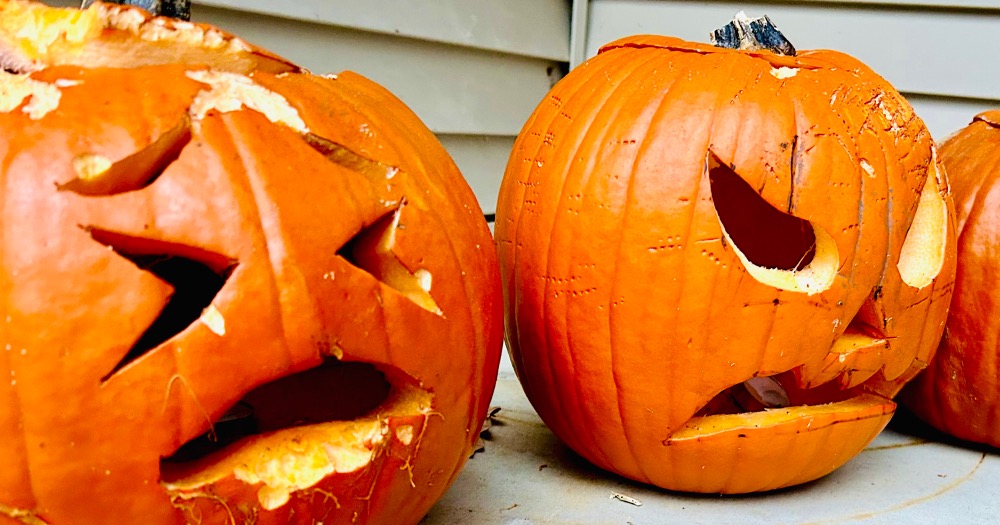
Halloween is a magical time of year, but when it’s over you’re left with multiple carved pumpkins to take care of. So, what do you do with all of those pumpkins in November?
There are many ways that you can dispose of your carved pumpkins, but why not put them to work for you by including them in your elementary instruction? Pumpkins in November can be an asset to your curriculum; consider some of the following ways to include them in your studies.
Pumpkins in the classroom can be used in many different ways. I’m going to focus on using carved pumpkins in November after Halloween, but check out my article “12 Instructive Books on Pumpkins for Elementary Students” to help you brainstorm some other ways that you could use pumpkins in the classroom.
One way that you can use carved Halloween pumpkins in the classroom is to give your early childhood learners a sensory experience. Carved pumpkins tend to be squishy and soft, perfect for little hands to explore. Put the pumpkins in a kiddie pool and let your students explore them with their fingers or sticks. Encourage them to poke and prod the carved pumpkins listening for the sounds they make, the way they feel, and how they smell. This could be experienced inside or outside depending on your preference.
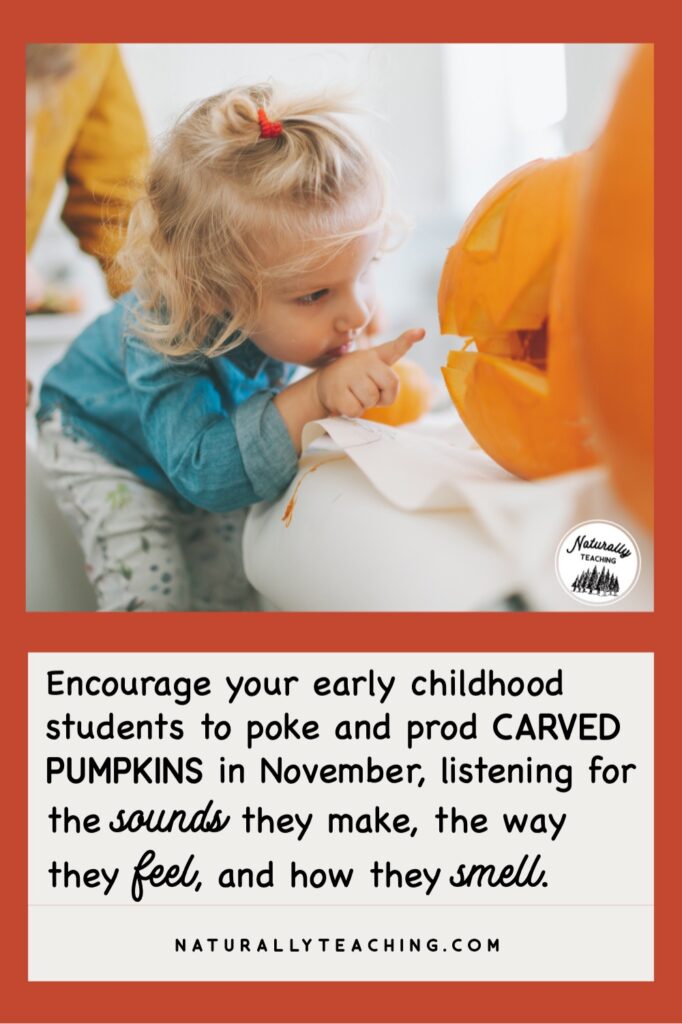
Another way that you can use pumpkins in November in the classroom is to get messy and investigate gravitational pull. Have your students bring in pumpkins and drop them from the top of bleachers (inside or outside) and see which way they go (NGSS 5-PS2-1). This hectic investigation will create a mess (sorry about that…) but will be a lesson your students will never forget! (If you drop them onto a tarp that can catch all the pieces, you can use the pieces by feeding them to animals or using them in a decomposing pumpkin activity described later in this article.)
When considering what to do with pumpkins after Halloween for animals, it’s important to consider how your pumpkins were treated. There are suggestions on the internet to spray your pumpkins with bleach, rub on petroleum jelly, or paint them with acrylic paint to “preserve” your carvings for the holiday. Unfortunately, if animals eat a pumpkin that has been preserved in these ways they can get sick.
To avoid this possibility, consider carving your Halloween pumpkins closer to the holiday. If you live in a warm climate, carve pumpkins a day or two before Halloween. If you live in a cool to cold climate, you could carve your pumpkins a week before. Using this method, your pumpkins will look great for trick-or-treating but will also keep the animals safe when they start to devour them.
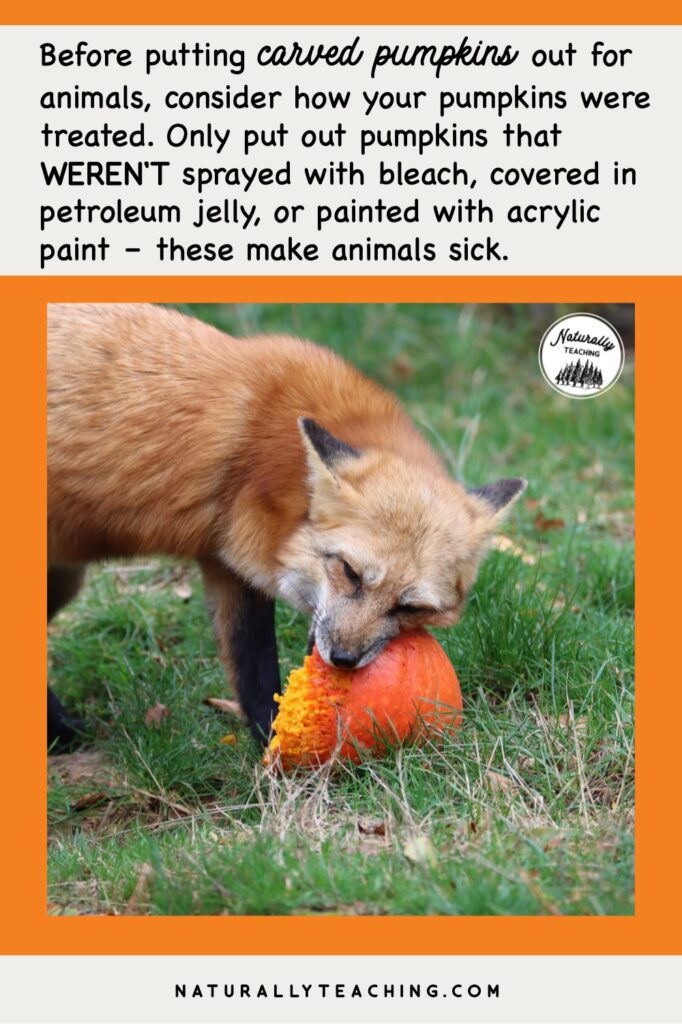
To use pumpkins in November to learn about animals, place them outside your classroom’s exterior door so that your students can observe who is eating them. This can lead to discussions about animal needs (NGSS K-LS1-1) and pumpkins’ role in the food chain (NGSS 5-LS2-1).
Another way to use pumpkins in November with animals is to donate them to a local farm. You could schedule a field trip where your students bring their jack-o-lanterns from home to donate as food to local farm animals (check with the farm first for permission). If this isn’t feasible, you could have your students bring their jack-o-lanterns into school and then you could take a video of you bringing their pumpkins to a local farm and depositing them into the pens of different animals.
Pumpkins in November tend to start decomposing and becoming a mess; this is a great learning opportunity! There are many activities that you can do with decomposing pumpkins, but I’m only going to explain a couple of my own here.
Before you commit to an activity with your decomposing pumpkins, consider reading the book Rotten Pumpkin by David Schwartz with your class. This story introduces 15 different voices that are involved in the decomposition of a jack-o-lantern including mice, squirrels, molds, yeast, sow bugs, and more. This can get your students interested in all the things that work together to break a pumpkin down into soil.
After reading Rotten Pumpkin, you can bring your pumpkins to school and put them in an unused corner of the schoolyard. Have your students predict which of the things from the book they might see on your decomposing pumpkins. You could keep track by taking pictures and creating a book of your own or by science notebooking what they find each visit.
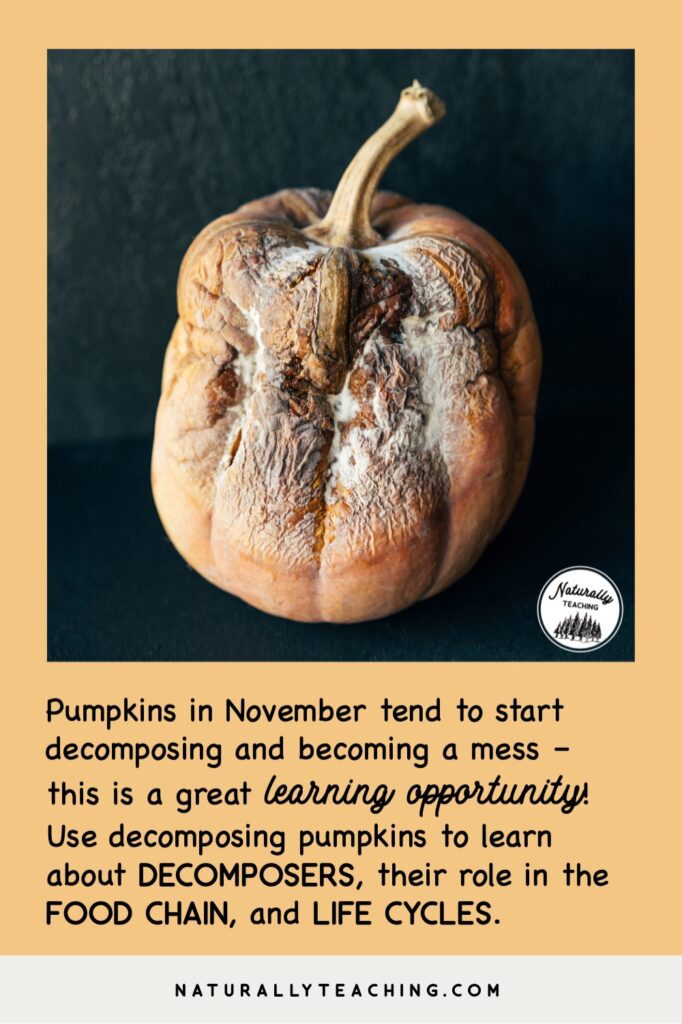
In addition, you could talk about the role of the pumpkin decomposers in the food chain. How do these organisms get their energy? Does anything eat them? Do they eat anything else? This project could easily turn into a fantastic science notebook prompt or could become an awesome research project. For a more creative twist on it, let your students create a comic strip of the different decomposers that they see on their pumpkins, similar to the voices in Rotten Pumpkin.
Does your school have a compost bin for a garden? Have your students bring in their pumpkins in November and put them in the compost to help create new soil. Alternatively, you could get permission from administration to put pumpkins in a corner of the school yard and let them decompose for the rest of fall, winter, and spring and see if any of the remaining seeds sprout by the end of the school year. This could help reinforce discussions about plant life cycles (NGSS 3-LS1-1).
It’s hard to decide what to do with painted pumpkins after Halloween, but the first step is always the same – you have to scrape the paint off. Unfortunately, acrylic paint can make animals sick and shouldn’t make its way into your compost; you need to dispose of it correctly. Grab a knife, your pumpkin shaving tool, a putty knife, a razor blade, or some other tool that can peel the paint from the outside shell and remove all of the acrylic paint.
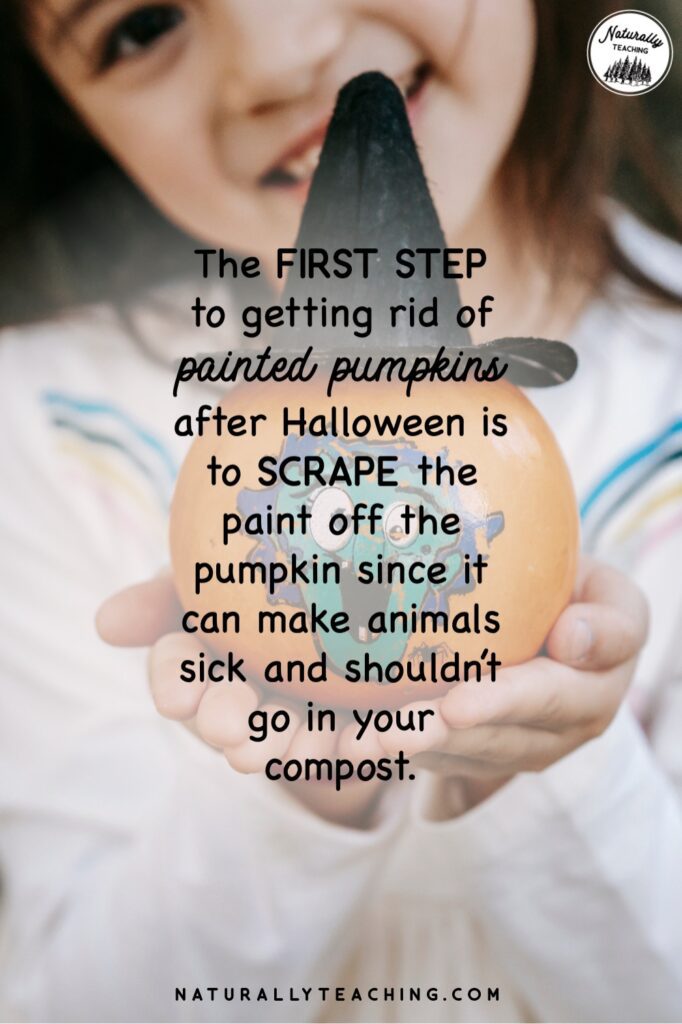
The painted parts that you remove should be thrown in the garbage and then the rest of the pumpkin can be put out for the animals to eat, donated to a local farm for animal feed, put in the compost, or decomposed in your school yard. Demonstrating this safe method of disposing painted pumpkins could be a valuable ecological lesson for your students who may not have thought about the consequences of acrylic paint in nature.
Hopefully this article got you inspired to find a way to use your pumpkins in November to help you with your curriculum. Not only will many of these activities engage your students but they will also help your students think about ecologically responsible ways to dispose of natural decorations from holidays, helping to develop the next stewards of our planet. Good luck, and enjoy the process!
Do you have any amazing experiences with pumpkins in November in your classroom? Describe them in the comments section to inspire a fellow elementary teacher to take action!
One thought on “Pumpkins in November: How to Use Halloween Pumpkins to Teach Students”